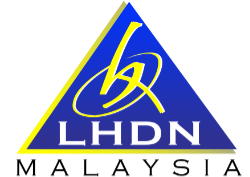Comparability when applying the cost plus method should take into account similarity of functions, risks assumed, contractual terms, market conditions, business strategies as well as any adjustments made to account for the effects of any differences in the aforementioned factors between the controlled and uncontrolled transactions. As with the resale price method, fewer adjustments are needed to account for product differences compared to the CUP method.
3.4 Cost plus Method (CPM)
3.4.1 The cost plus method is often useful in the case of semi-finished goods which are sold between associated persons, or when different companies in a multinational group have concluded joint facility agreements or when the manufacturer is a contract manufacturer or where the controlled transaction is the provision of services.
3.4.2 The starting point in a cost plus method, in the case of transfer of products between associated persons, is the cost to the supplier. An appropriate mark-up is added to this cost to find the price that the supplier ought to be charging the buyer. The appropriate mark-up should ideally be established by reference to the mark-up earned by the same supplier from comparable uncontrolled sales to independent parties. This is due to the fact that similar characteristics are more likely found among sales of product by the same supplier, than among sales by other suppliers. If no such transactions exist, the appropriate mark-up may be determined based on comparable transactions by independent parties operating independently. If there are material differences between the controlled and uncontrolled transaction that could affect the gross profit mark-up, appropriate adjustments must be made on the gross profit mark- up earned in the uncontrolled transaction.
Formula for arm's length price in CPM:
3.4.4 Cost Structure Consideration
- The method used in determining costs and the accounting policies should be consistent and comparable between the controlled and uncontrolled transaction, and over time in relation to the particular enterprise. The costs referred to in the cost plus method is the aggregation of direct and indirect costs of production. Usage of other costs must be well justified and may be considered only if they result in a more accurate estimate of the appropriate margin. In computing costs, the practice must be in accordance with generally accepted principles or normal accounting standards in Malaysia.
- Direct costs are costs identified specifically with a particular activity including compensation, bonuses, travelling expenses of employees directly engaged in performing such activity, or materials and supplies consumed in providing the activity. In determining the cost base incurred in providing an activity, costs that do not relate to the service under consideration must be excluded and the costs must be consistent with those incurred in comparable transactions.
- Indirect costs are costs not specifically attributable to a particular activity but nevertheless relate to direct costs or relate to the process of the activity. These include utilities, rental, supervisory and clerical compensation and other overhead costs of the department incurring the direct costs. Indirect costs also include an appropriate share of costs of the supporting units and departments (e.g. accounting and secretarial units etc).
- Direct costs are costs identified specifically with a particular activity including compensation, bonuses, travelling expenses of employees directly engaged in performing such activity, or materials and supplies consumed in providing the activity. In determining the cost base incurred in providing an activity, costs that do not relate to the service under consideration must be excluded and the costs must be consistent with those incurred in comparable transactions.
- The determination of costs is important in the application of CPM where the comparable mark up is to be applied to a comparable cost basis. For example, an independent supplier who leases its business assets may not be comparable to a supplier in a controlled transaction who owns its assets. Adjustments must be made to eliminate the differences in these costs.
- It is also important to consider differences in the level and types of expenses (operating and non-operating expenses including financing expenditures) related to the functions performed and risks assumed by the parties or transactions being compared. Consideration of these differences may indicate the following:
- If expenses reflect a functional difference which has not been taken into account in applying the method, an adjustment to the cost plus mark-up may be required;
- If the expenses reflect additional functions that are distinct from the activities tested by the method, separate compensation for those functions may need to be determined. Such functions may for example amount to the provision of services for which an appropriate reward may be determined. Similarly, expenses that are the result of capital restructures reflecting non-arm's length arrangements may require separate adjustment;
- If differences in the expenses of the parties being compared merely reflect efficiencies or inefficiencies of an enterprise, as would normally be the case for supervisory and general and administrative expenses, adjustments to the gross margin may be inappropriate
- If expenses reflect a functional difference which has not been taken into account in applying the method, an adjustment to the cost plus mark-up may be required;


